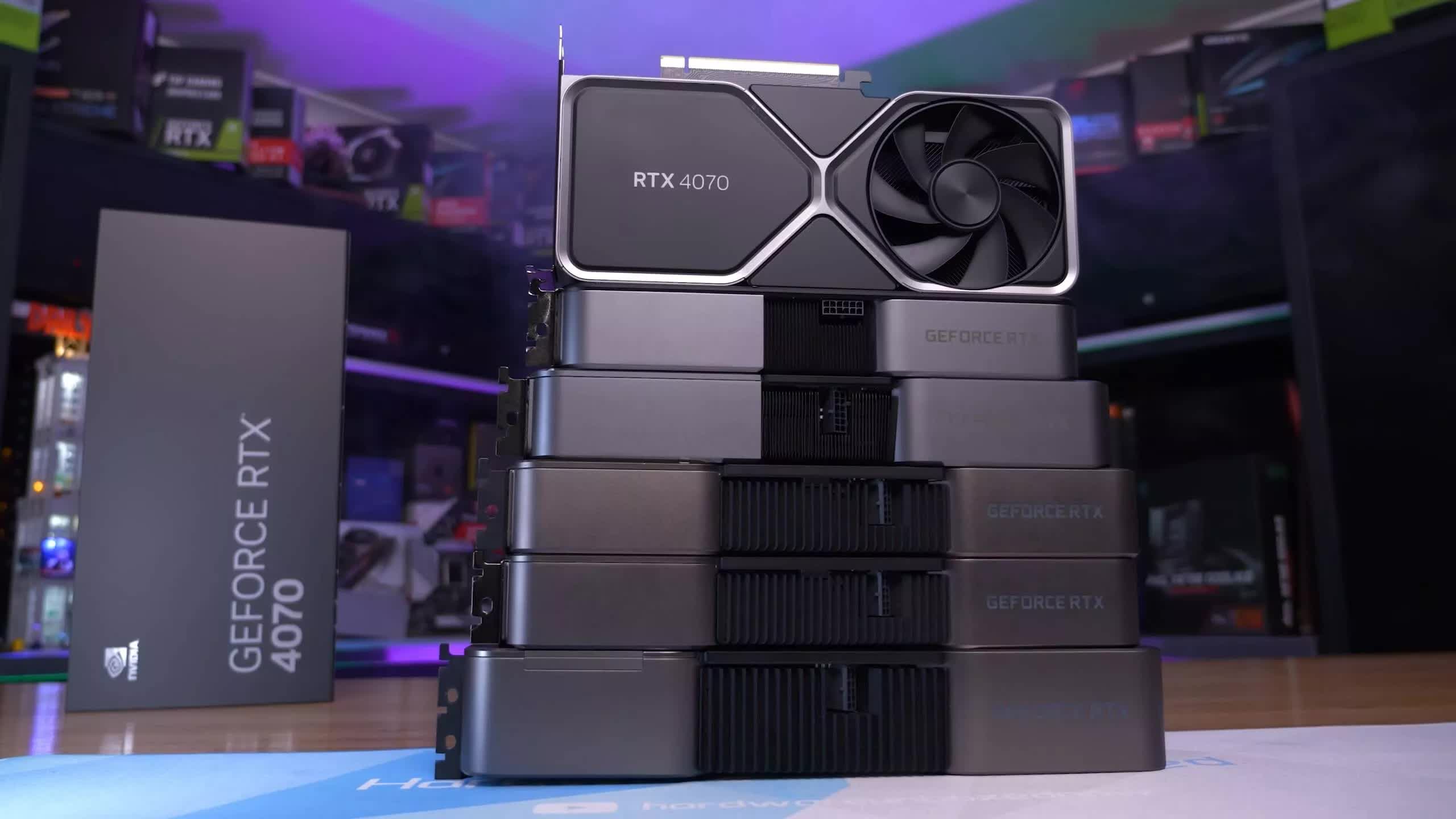Why it matters: The average selling price for a GPU at retail has more or less doubled in the past three years for both Nvidia and AMD. Intel's first Arc GPUs have yet to pose any significant competition for either company, so it shouldn't surprise anyone if Nvidia went out of its way to prevent prices from dropping.

Earlier this month, Nvidia launched the GeForce RTX 4070 – a highly anticipated mid-range graphics card based on the Ada Lovelace microarchitecture. Unfortunately, it arrived at a time when gamers are much more reluctant to pay a premium for a product that only looks like good value because GPUs, in general, are still overpriced.
The silver lining for this release is that it prompted AMD to respond with discounts on last-gen graphics cards like the Radeon RX 6800 and RX 6800 XT. After a few years of sky-high prices for the most crucial component in a gaming PC, it's nice to see the price wars heating up again.
�"� Graphics Cards Retail Sales Week 15 2023 (mf)
– TechEpiphany ðÂÂðºð·ðºð§ð¾ð·ð¸ð§ð·ð¿ð¦ð°ðªð±ð® (@TechEpiphany) April 15, 2023
(RTX 4070 launch week)
â¹ï¸Â Units/share:
AMD: 2660 units, 58.98%, ASP: 559
Nvidia: 1830, 40.58%, ASP: 798
Intel: 20, 0.44%, ASP: 289
â¹ï¸Â Revenue/share:
AMD revenue: 1488180, 50.36%
NVIDIA: 1461225, 49.45%
Intel: 5782, 0.2%
â¹ï¸Â… pic.twitter.com/rQLp5fTyh3
Rumors from China say Nvidia may temporarily restrict the supply of RTX 4070 cards in response to slower-than-expected sales. The company flooded retailers with its newest GPU hoping that positive reviews would nudge gamers toward an upgrade, but the $600 MSRP turned out to be a bit too optimistic.
According to supply chain insiders, Nvidia recently informed AIB partners that it would pause production of RTX 4070 GPUs for at least one month to prevent an overstock issue and allow retailers more time to clear existing inventory. Some, like Novatech and Overclockers in the UK, have already started discounting models, including the Palit RTX 4070 Dual or the Inno3D RTX 4070 Twin X2, but they're still far from flying off the shelves.
If anything, we're glad to see gamers voting with their wallets when GPU manufacturers push their luck with a premium pricing strategy in the middle of an economic storm. We can only hope they take a more sensible approach with future products like the RTX 4060 Ti and mid-range RDNA 3 models from AMD, which shoud break cover later this year.
https://www.techspot.com/news/98405-nvidia-might-cut-supply-rtx-4070-gpus-response.html